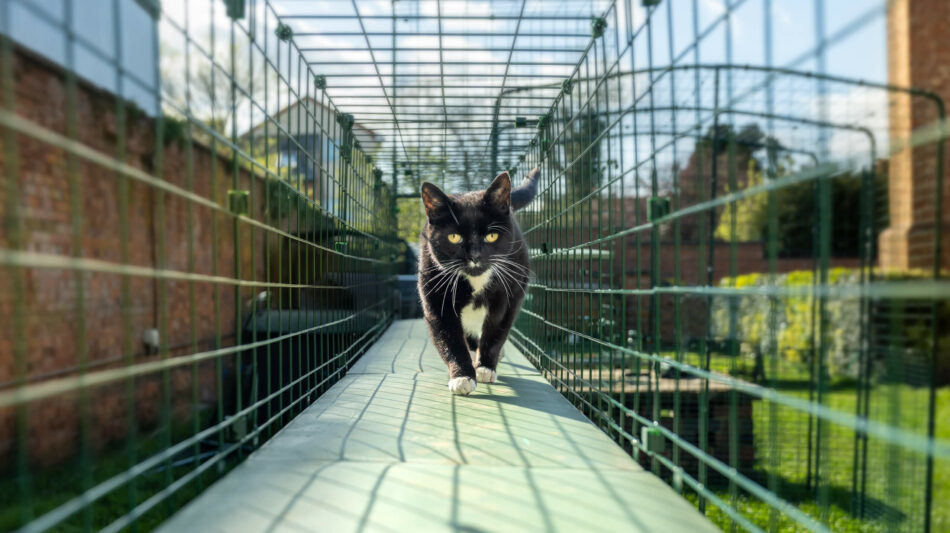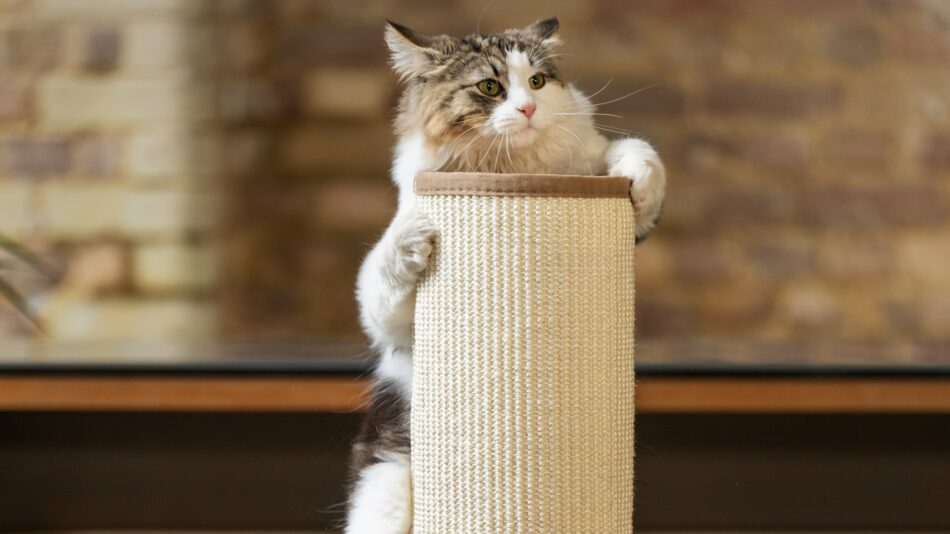Cat meows and what they mean
Wondering why your cat meows and what they mean? Unlike their wild counterparts who rarely vocalize to each other, domestic cats have developed their meowing to communicate with humans. From greetings to requests for food, meows and other cat noises have many meanings. Here’s help in your quest to become fluent in feline.
The cat’s meow: vocal clues
While cats communicate with each other through body language and scent, vocalizations are their go-to with humans. Each cat develops their own “voice,” complete with signature pitches, volumes, and even accents. Understanding different cat sound meanings helps you better care for your feline, and strengthens your bond in the process.
Here are some of the most common types of meows and what your cat may be trying to tell you, and how to respond in a way that will resonate with your cat.
Short meows: a friendly hello
A short, high-pitched meow is often a casual greeting. Think of this as your cat’s way of acknowledging your presence. You may hear this type of meow when you walk into a room, open a door, or return home after being away. It’s a lighthearted and friendly vocalization, especially when accompanied by an upright tail and bright eyes.
Multiple meows: excited or demanding attention
If your cat greets you with a rapid series of meows, or even those that escalate in pitch or frequency, they’re likely trying to convey a sense of urgency. Excitement, impatience, or a demand for attention are some of the meanings behind these types of meows. You’re most likely to hear these around mealtimes, or when they’re encouraging you to follow them to a specific destination (like an empty food bowl).
Long, drawn out meow: unhappy or demanding
The drawn-out “meeeeeooooow” often speaks of frustration or a strong desire. Your cat is essentially wondering what has been taking you so long. This type of meow may be accompanied by pacing, tail swishing, or scratching at doors. If your cat seems distressed, check to see that they have food, water, and a clean litter box.
Chirps and trills: friendly and social
Trilling is a sweet, rolling sound often made with the mouth closed. It’s a sound mother cats use to call their kittens and is usually friendly and affectionate in nature. If your cat trills when they see you or when they’re approaching you, it’s one of the ways your cat shows they love you.
Chirping sounds like a mixture of a meow and a bird call, and is often heard when your cat sees prey outside. Birds, squirrels, or other small animals can bring out this hunting instinct in your cat. Chirping is a sign of excitement, but can also mean frustration at viewing prey through a window.
Caterwauling: mating or distress
This loud, keening sound is typically heard from intact male and female cats, and often signals mating behavior. It can also be heard when cats are in discomfort, or from senior cats experiencing confusion. If your cat suddenly starts caterwauling, it’s worth having them examined by your veterinarian, especially if they’re spayed or neutered, or if it’s accompanied by odd behavior.
Growling, hissing, and yowling
These sounds aren’t subtle. A growl or hiss signals fear, irritation, or a warning to back off. Yowling can be territorial or in response to pain. These types of vocalizations are usually more intense and require immediate attention to your cat’s environment, social dynamics, or health.
When might meowing be a problem?
While most meowing is perfectly normal and endearing, excessive or unusual vocalization can be a sign that something is amiss. If you’re wondering “Why is my cat meowing so much?”, consider the following possibilities:
Illness or discomfort
Cats may vocalize more when they’re in pain, feeling nauseous, or dealing with a medical condition. Sudden changes in vocal behavior should always prompt a vet visit.
Loneliness and boredom
Indoor cats that spend long hours alone may meow out of loneliness or boredom. This is especially common in social or high-energy breeds like Siamese cats.
Stress or anxiety
Changes in routine, moving houses, or adding new pets or people to your home can stress your cat. Increased vocalizations may be a cry for reassurance or a sign of anxiety during times of change.
How to respond to your cat’s meows
Understanding the meaning of cat noises is one thing, but responding in turn is another. Here are some ways to appropriately handle your cat’s vocalizations:
Assess and respond to needs: Check their food, water, litter box, or outside views.
Don’t reward demanding behavior: If your cat meows insistently for food outside of mealtime, avoid giving in — otherwise, your cat will have you trained.
Talk back: Mimic your cat’s tone or engage with calm conversation. Sometimes your cat may just want to chat.
Redirect attention: Use cat scratchers, cat trees, or interactive playtime to shift their focus.
Rule out medical issues: Any sudden increase or decrease in vocalization should be checked by a vet.
Omlet and your cat
At Omlet, we know that happy, healthy cats have a lot to say. That’s why we’ve created what you need to support their well-being and enrich their everyday lives. From cozy cat beds to indoor cat trees and outdoor Catios, our cat products keep your cat’s mind and body active. Whether your feline friend is a chatty companion or a quiet observer, we’ll help you create a home that allows them to be their full, expressive self.
This entry was posted in Cats


